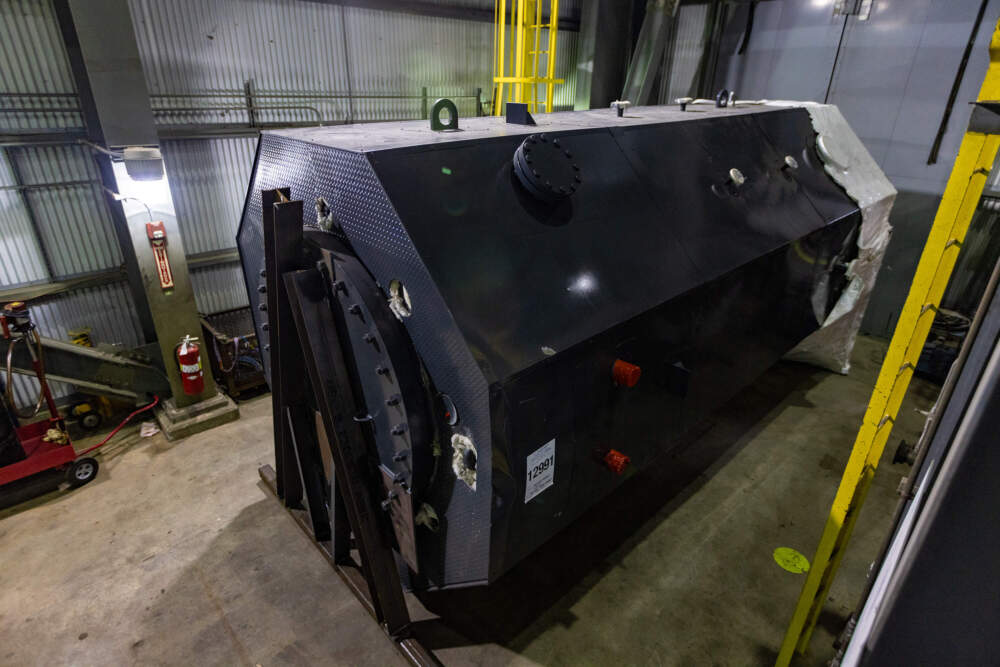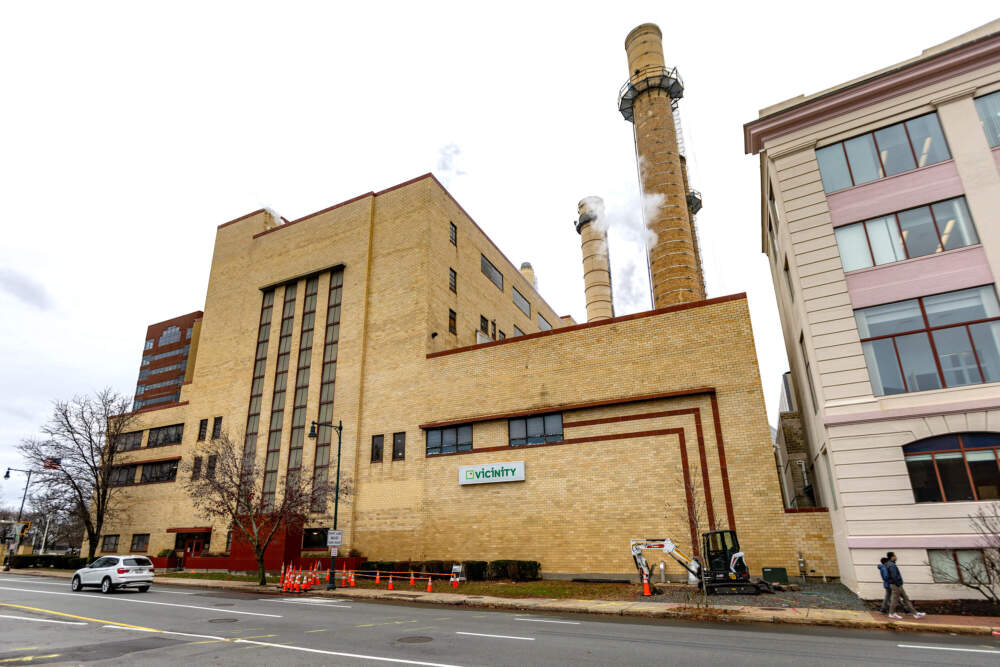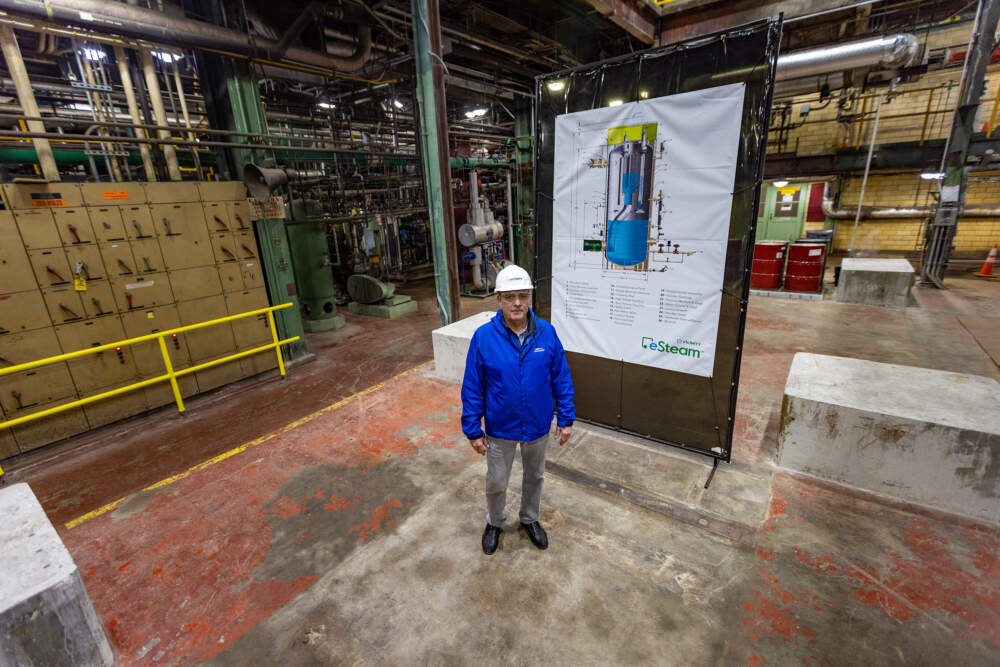Advertisement
How 'greener' steam could help Boston buildings cut climate-warming emissions
Resume
Buildings account for the majority of greenhouse gas emissions in Boston and Cambridge. Both cities have aggressive climate goals that require large building owners to gradually reduce emissions to net zero by 2050.
One big challenge building owners face is to figure out how to cut their heating systems’ emissions, which account for roughly half of their carbon footprint. Many of these large buildings rely on older steam heat systems, which were originally developed to use the steam byproduct from electricity generated by burning coal, and later natural gas.
Now, a natural gas power plant in Kendall Square is trying to make that steam greener. Vicinity Energy, the company that runs the plant, is installing an industrial-scale electric boiler to produce the steam.
As more renewable energy is developed to power Massachusetts’ electrical grid, the steam’s carbon footprint will continue to lower.
Eventually, “it'd be zero emissions, right? Because we're going to take in renewable power,” said Don Silvia, Vicinity Energy’s regional vice president of operations.
The steam from Vicinity’s plant heats travels through 30 miles of pipe to heat more than 200 buildings — hospitals, biotechnology laboratories, museums, hotels and office space.
“Part of the reason why we can do what we're doing is because we're not starting from scratch,” said Silvia.
Greening the steam production could cut roughly 20% of the emissions from Boston’s largest buildings, according to a 2018 report commissioned by the city.
“By getting the steam generation facilities to adopt these sort of solutions, we are significantly reducing Boston and Cambridge's emissions,” said Michael Gevelber, an associate professor of mechanical engineering at Boston University.

Other buildings could benefit from the electric boiler technology, too. Massachusetts has at least 21 steam heating systems, according to the International District Energy Association. Those systems serve university communities, downtown areas and medical complexes such as the Longwood Medical area in Boston.
But the cost may be a challenge. Experts say that transitioning to the electric boiler steam will be expensive for building owners.
“Electricity costs 3 to 5 times more than natural gas,” Gevelber said.
In addition, because the Massachusetts electrical grid is still mostly powered by fossil fuels, the electricity that powers the boiler is still generating emissions. For clients who want to buy net zero steam, Vicinity Energy will purchase local renewable energy credits — and that will cost more.
“Each building owner really needs to understand their building and how they’re most cost effectively going to meet the declining emission limits,” Gevelber said.
Improving building insulation can reduce how much heat a building uses, and installing electric heat pumps can help move away from fossil fuels. Experts say the solution can be a mix of options, including clean steam.
One Vicinity Energy client that is looking into these options is the Massachusetts General Hospital campus in Boston. Steam accounts for 12% of the campus’ emissions.

“Steam is not the only option available to us. Heating can be done with heat pumps very effectively,” said Jonathan Slutzman, Massachusetts General Hospital’s medical director for environmental sustainability. He said the hospital has not decided if they will buy the electric steam.
So far, one building developer has signed up to buy steam generated by the electric boiler. The boiler has the capacity to produce about one-third of the steam the plant currently generates, said Vicinity Energy’s president Bill DiCroce. The company plans to generate steam through other clean sources in the future, such as an industrial-scale heat pump.
Eventually, Vicinity Energy will phase out nearly all natural gas generation at the plant, but it may take several years.
In the meantime, Silvia said other steam operators are starting to show interest in electric boilers. Recently, a representative from a Vicinity Energy plant in Philadelphia toured the Cambridge facility. “Everybody's coming and looking at what we're doing and figuring out how we're going to do it,” he said.
With more cities passing legislation to lower carbon emissions, using electric boilers to serve steam heat systems could be a part of the solution.
This segment aired on December 27, 2023.
